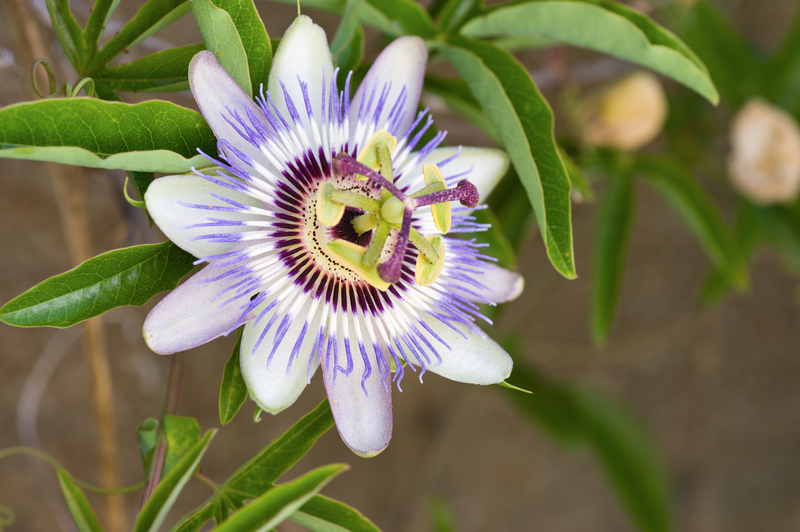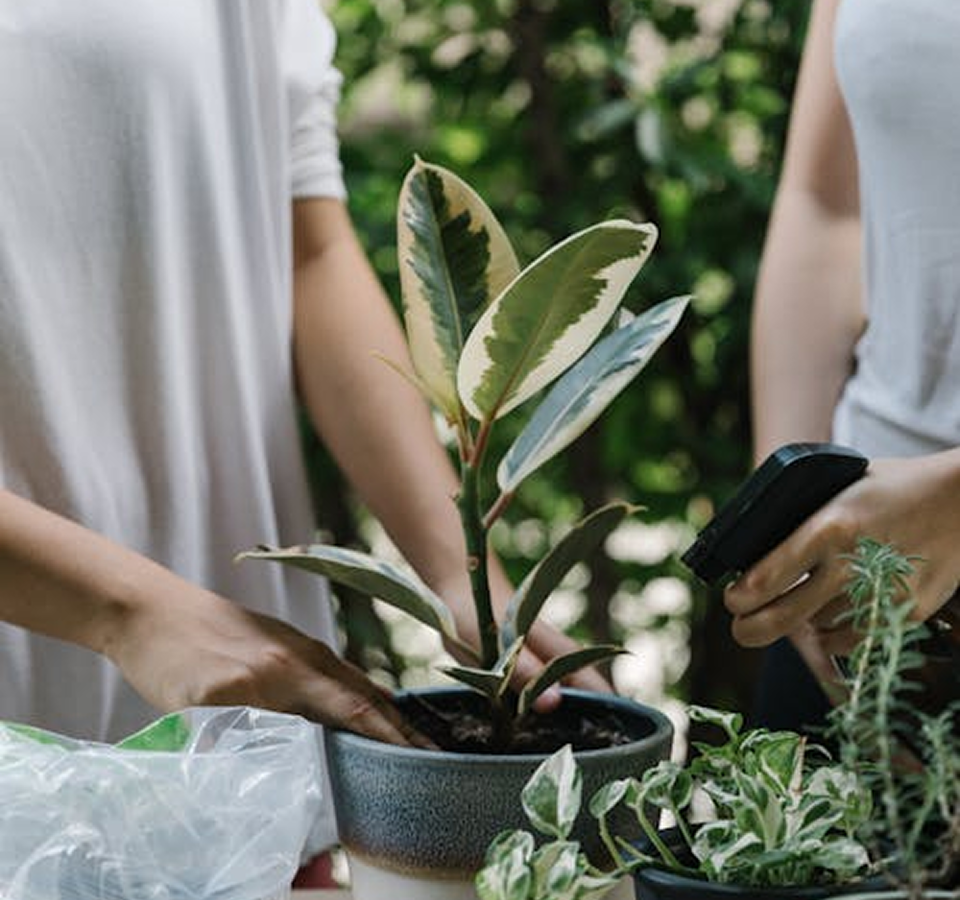Guarding Garden Plants from Frost and Freezes: Essential Strategies for a Healthy Garden
As the seasons shift and temperatures dip, the beautiful garden you've nurtured can be at risk from cold weather events like frosts and freezing spells. Understanding how to guard your garden plants from frost and freezes is essential for ensuring their survival and continued growth.
In this comprehensive guide, we'll cover everything from identifying frost-prone plants to practical, science-backed methods for protecting your garden. Whether you're an experienced horticulturist or a passionate beginner, these tips will help you keep your plants safe, vibrant, and thriving--no matter how cold it gets.
Why Is It Important to Guard Plants from Frost and Freezing Temperatures?
Frost occurs when the temperature at the surface of the soil falls below the freezing point of water (0?C or 32?F). When this happens, ice crystals form on plants, which can rupture cell walls, cause dehydration, and lead to wilted or blackened foliage, stunted growth, or even death for sensitive varieties. Freezing events are even more severe and can damage roots, stems, and buds irreparably.
- Protecting your garden ensures the preservation of time and money invested.
- Many popular vegetables, herbs, and ornamentals are frost-sensitive.
- Winter damage can reduce yields and affect next season's growth.
Frost vs. Freeze: Knowing the Difference
Though the terms are often used interchangeably, a frost is caused by cold, clear nights when heat escapes from the ground, while a freeze describes conditions when air temperature drops below freezing regardless of moisture. Both can be damaging, but frosts are often localized and can be managed with simple methods.
Which Plants Need Extra Protection from Frost and Freezes?
Some garden plants withstand cold better than others. Knowing which varieties are at risk helps you prioritize your protection efforts.
- Tender annuals - Examples: tomatoes, peppers, basil, impatiens, petunias
- Young vegetables and herbs just after transplanting
- Exotic ornamentals and subtropical plants - hibiscus, citrus, bougainvillea
- Newly planted trees and shrubs before roots establish
- Succulents and cacti in regions with occasional freezes
- Perennials with early tender new growth
Plants That Tolerate Light Frosts
Some plants actually thrive after a light frost, becoming *sweeter* or more flavorful:
- Kale, Brussels sprouts
- Carrots, parsnips
- Cabbages, broccoli
But remember, even cold-hardy plants have limits--prolonged or severe cold snaps can eventually harm them too.
How to Identify When Frost and Freezes Are a Threat
One of the most effective ways of guarding garden plants from frost and freezes is anticipation. The following are reliable indicators:
- Weather forecasts: Pay attention to local reports and look for predicted lows at or below 40?F (4?C).
- Frost advisories and warnings from meteorological services
- Clear, still nights in autumn or early spring are classic frost setups.
- Your garden's microclimates: Low-lying areas, exposed beds, or those near walls can experience colder temperatures than the general forecast suggests.
Using Technology to Predict Frost
Thermometers placed at plant level (not just at 5 feet off the ground) and Wi-Fi-enabled garden sensors can alert you to actual conditions, allowing you to act just in time.
Preparing Your Garden for Frost and Freezes: Proactive Measures
Don't wait until the last minute! A few simple seasonal preparations can help protect your garden from cold damage:
- Mulching: Apply a thick layer of mulch (straw, leaves, bark, or compost) around the base of plants to insulate soil and roots.
- Reduce fertilizer use late in the season to avoid promoting tender new growth.
- Water before a freeze: Moist soil holds more warmth than dry; water well on the day before cold is forecast.
- Pruning: Delay pruning in autumn to avoid stimulating delicate new shoots.
- Move sensitive containers into shelter (garage, porch, greenhouse).
Designing Gardens with Frost Protection in Mind
When planning your garden's layout, consider placing tender plants in naturally warmer spots--near south-facing walls, under tree canopies, or in raised beds that drain and warm more quickly in spring.
What to Do When Frost or Freeze is Imminent: Emergency Protection Methods
When you see frost warnings, take quick, practical steps to guard your garden plants:
Covers and Blankets: Fast and Flexible Protection
- Drape frost cloths, old sheets, towels, or even newspapers loosely over plants at sundown. Remove covers in the morning to let warmth in.
- Use plastic sheeting (never directly on plants--always use stakes or frames to keep it off foliage for insulation and to avoid condensation damage).
- For small or container plants, overturned buckets, cloches, or even cardboard boxes can be effective shields.
Row Covers and Low Tunnels: Effective for Raised Beds and Vegetable Rows
Commercially available floating row covers made from lightweight spun fabric can protect crops down to about 28?F (-2?C). Secure them on all sides to retain heat.
Watering as a Shield
Strangely, watering your garden before a cold night can actually help--moist soil gives off heat and raises the surrounding temperature by a degree or two, which can make the difference for borderline plants.
Adding Heat Sources
- Old-fashioned Christmas lights (non-LED) strung through shrubs gently warm the air.
- Place water jugs painted black or large rocks around beds--they absorb heat by day and slowly release it at night.
- In severe cases, portable heaters can be used in greenhouses or tunnels, with proper ventilation.
Wind and Frost: Blocking Cold Air with Barriers
Wind increases plant dehydration and drives down temperatures. Temporary windbreaks--burlap screens, garden fences, or stacked straw bales--shield plants on exposed sites.
Container Plants: Quick Moves Can Save the Day
- Bring pots and hanging baskets indoors or cluster them in a sheltered corner, away from prevailing winds.
- Grouping containers packs heat, and wrapping them in bubble wrap or burlap gives extra protection.
Long-Term Frost Protection: Building Resilience Into Your Garden
Over time, you can create a garden that's less vulnerable to cold damage with these sustainable approaches:
- Grow native and cold-hardy plant varieties as the backbone of your garden.
- Establish windbreak hedges or fences to reduce cold stress on exposed beds.
- Use pergolas, arbors, or trellises to shield tender plants or vines in strategic spots.
- Raise garden beds to improve drainage and warm sooner in spring.
- Build a small greenhouse or cold frame for the most delicate or valuable plants.
- Rotate crops and stagger planting dates to minimize loss from a surprise cold snap.
Integrating Thermal Mass for Passive Heating
Adding elements like stone, brick, or water features close to beds will absorb heat during the day and radiate it at night, evening out temperature swings.
Selecting Frost-Tolerant Plants: A Sustainable Solution
Some excellent choices for cold-resistant gardens include:
- Russian sage
- Heuchera and hellebores
- Ornamental grasses
- Daylilies
- Cabbages, leeks, onions
If Frost Damage Occurs: Steps for Recovery
Despite your best efforts, sometimes plants get nipped. Here's what you can do:
- Do not prune frost-damaged growth immediately; wait until all danger has passed and new growth begins, so you do not inadvertently trim away living tissue.
- Water plants in the morning after a freeze to help them recover.
- If roots are affected, gently replant and give extra care in the weeks following.
- Apply a balanced slow-release fertilizer in spring to stimulate healthy regrowth.
- Record which varieties struggled, and consider more resilient replacements for next year.
Frequently Asked Questions About Guarding Garden Plants from Frost and Freezes
What temperature should I start protecting my plants?
Protect tender plants when forecasts predict temperatures below 40?F (4?C), especially if they're still acclimating. Some hardy crops can withstand light frost but take care with new transplants and exotics.
Does covering plants really help against frost?
Yes! Covering creates an insulating air pocket, preventing radiant heat loss on cold nights. For best results, ensure covers reach the ground on all sides and avoid plastic touching the foliage directly.
Can I use plastic to protect my garden plants from freezing?
Use plastic with caution! It traps heat efficiently but must be kept off plants with a frame or hoops to prevent condensation and cold burns.
What are the best DIY frost protection methods?
Everyday materials like blankets, old sheets, buckets, and even milk jugs can be lifesavers in a pinch. Just remember to remove covers each morning when temperatures rise.
How do I protect my container plants?
Move containers indoors or group tightly and wrap pots with insulating material. Raise off cold ground to prevent root freezing.
Conclusion: Guarding Your Garden from Frost and Freezes is an Ongoing Process
With proper knowledge, proactive planning, and a readiness to act quickly, you can guard your garden plants from frost and freezing temperatures--preserving your hard work and enjoying a lush, fruitful landscape year after year.
Remember: Every garden is unique. By understanding your microclimate, choosing resilient plant varieties, and having the right materials on hand, you can outwit the cold and cultivate a thriving, resilient garden--no matter what winter brings.
- Anticipate and prepare for cold weather events.
- Use a combination of insulation, wind barriers, and heat sources for maximum protection.
- Learn from each season to build a stronger, more beautiful garden each year!
Guarding garden plants from frost and freezes isn't just about reacting to weather--it's about building a sustainable approach that keeps your garden healthy, vigorous, and full of life, even when the mercury drops.


